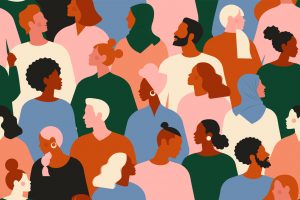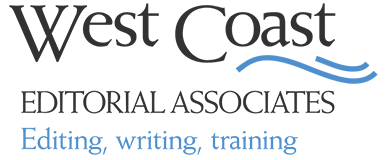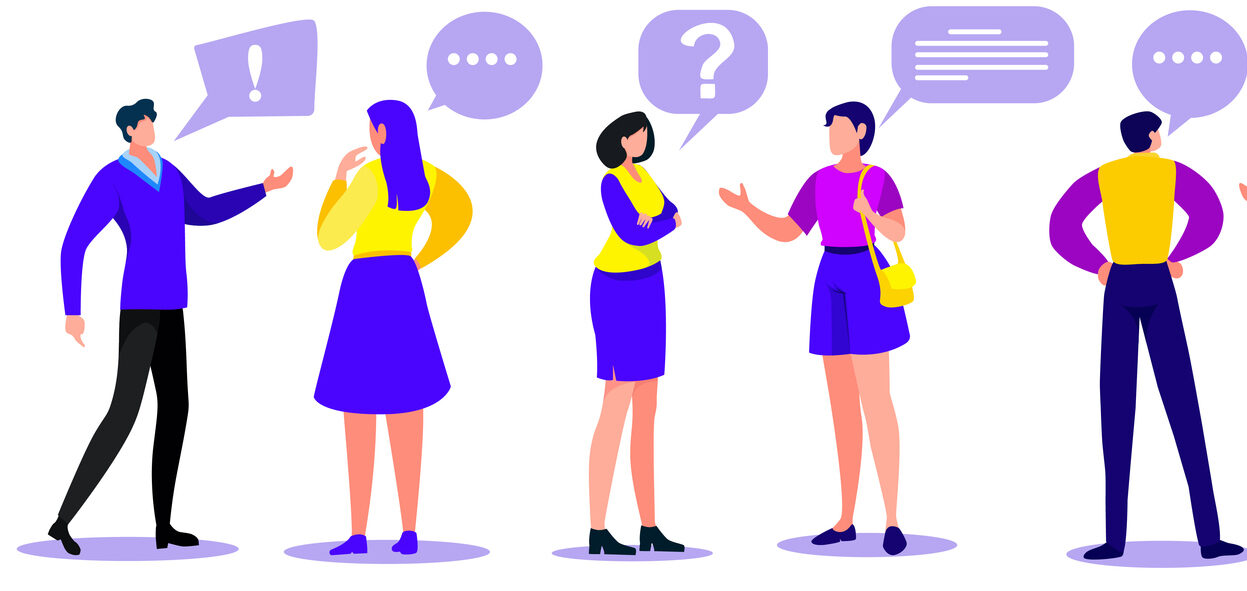All of us at West Coast Editorial Associates (WCEA) are…
Consciously choosing our words

One of our responsibilities as editors is to be on the lookout for discriminatory language, hidden bias, and stereotypes in the text we’re editing. We want to use words and phrases that promote inclusivity, respect, and justice. But this process is complex and often intimidating; the language for race, gender, disability, and every other aspect of identity is constantly evolving. While we may recognize the importance of using language that respects the lived experiences of under-represented groups, we don’t always know what language is harmful.
I recently attended a webinar, “Choices Matter: Language in the 21st Century,” offered by Editors Canada, that tackled these issues head on. The presenter, Rhonda Kronyk, is a settler/Dene researcher, writer, and editor, and many of her points resonated with me.
Rhonda pointed out that there are a lot of words and phrases we know not to use. These are easy edits to make. But we also know language can be subtle, and racism and bigotry can be difficult to detect. She gave several examples of common words and phrases we may not think of as discriminatory:
- “Hold down the fort” and “circle the wagons” are both based on racist notions about Indigenous Peoples. When fur traders moved across Canada, they built forts to keep Indigenous Peoples out. The phrase “circle the wagons” is the name of a defensive technique used by early settlers for protection against possible attack by Indigenous Peoples. While these phrases may seem harmless, they have racist origins and portray the original inhabitants of this land as savages.
- Two more potentially offensive phrases are “let’s smoke a peace pipe” and “let’s have a powwow.” People may use them innocently, but this usage ignores the important cultural and spiritual significance of both ceremonies.
- The trouble with “master” is clear in the context of “master and slave” or “master of the house,” but we may not see a problem in more everyday uses, like “master key” or “master bedroom.” However, there are alternatives we can use, such as “main bedroom,” which don’t have racist or sexist roots.
- We may use the phrase “sold down the river” casually, but it stems from the Mississippi trade in people who were enslaved.
- Even references to the colours “black” and “white,” while not racist in themselves, are often based on racist concepts that remain embedded in our language. For example, “blacklist,” “blackball,” and “black mark” are all negative, whereas words containing “white,” such as “whitelist,” are often positive.
Another thing to keep in mind is that our language is deeply rooted in a binary model of gender, and non-binary gender is almost invisible in the materials we edit. The language of gender is changing, and Rhonda shared some problematic and preferred terms from the GLAAD Media Reference Guide, which was created by writers and journalists from the LGBTQ community in the US. For example, they recommend we use the term “transition,” not “sex change”; “assigned or designated [male/female],” not “biological sex”; and “not visibly transgender,” as opposed to “passing.”
Rhonda sought to be non-prescriptive, but she was very clear about one thing: members of the dominant social group do not get to decide what others find offensive.
So how do we keep on top of all these issues?
We should educate ourselves by reading existing resources from under-represented groups. Inclusive language is not new and there is a lot of information already out there, both online and in print.
Rhonda advised against asking the first person we find from an under-represented group to be our only resource. Rather, we should first read blogs, articles, and books by members of the community we want to learn more about. Further, if we then do more listening than talking, we’ll learn a lot—not just about what terms people in that community are using, but also how they are affected by language. We need to listen to people who have had the experiences.
We can also check for style guides published by members of a specific community. There are a lot of excellent resources out there:
- Elements of Indigenous Style: A Guide for Writing About and for Indigenous Peoples by the late Greg Younging
- Conscious Style Guide
- Gender Inclusive Language Guide
- An Ally’s Guide to Terminology: Talking About LGBT People and Equality
- Disability Language Style Guide
There is no preeminent authority on inclusive language. We need to continue to do what comes naturally to editors: consult as many style guides as possible and accept that language around diversity and inclusion, like the language itself, is constantly evolving.
Rhonda left us with some provocative questions:
- Will you take the time to question your own assumptions and biases?
- Will the change you demand be deep systemic change or surface change?
- Will it extend only to one group of people or to all?
- Will you only make the changes that are easy—or will you take risks to make and demand difficult changes?



